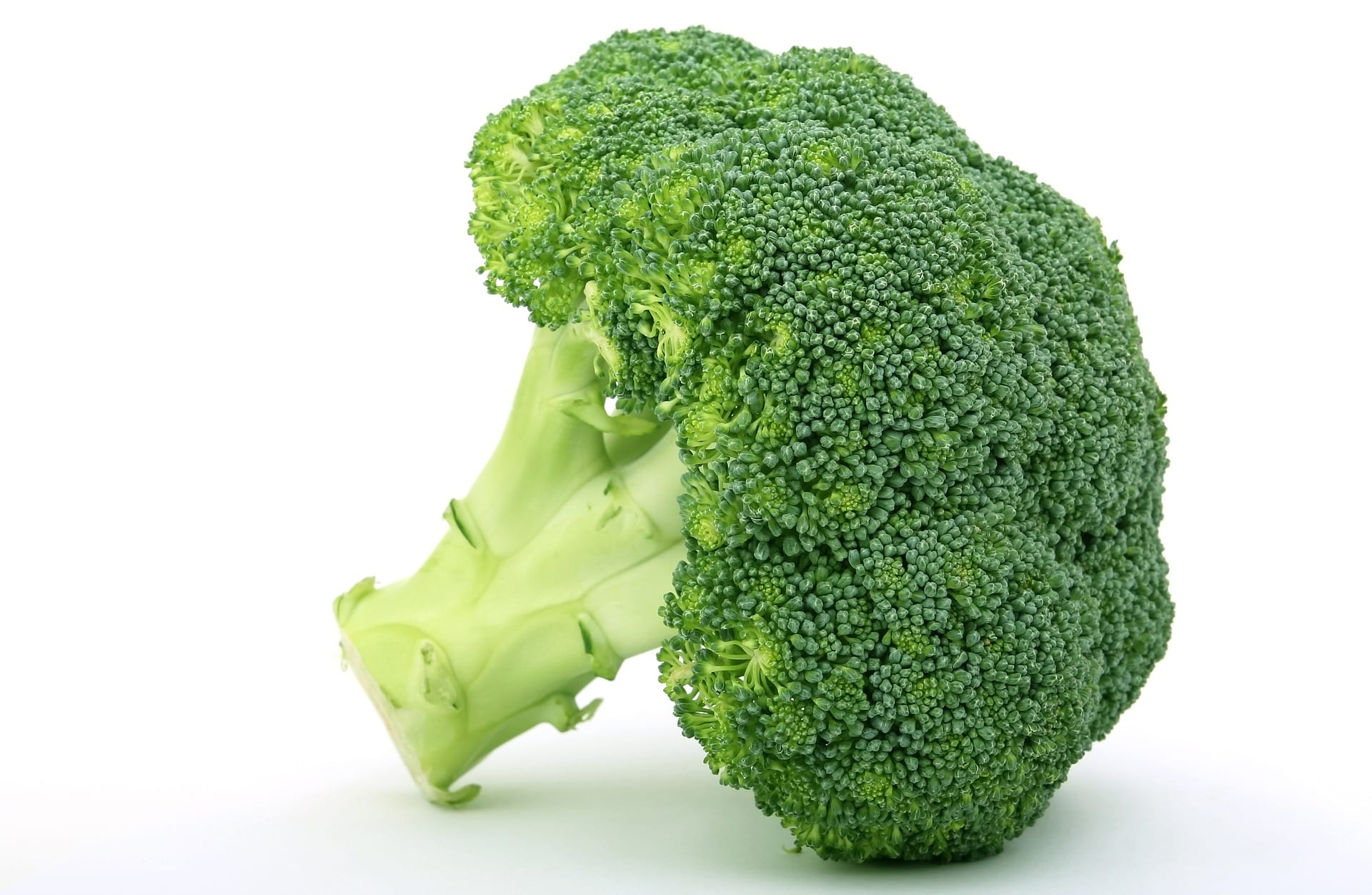Write: Monica Uriel. Journalist
Lanzarote not only does it have some unique lava vineyards in the world where its Volcanic malvasia. He also has, on a tour of the works of César Manrique, beaches of the island where you can have a beer made with this grape. In addition to visiting cheese shops, as well as its centenary Salt flats of Janubio. All this always with the presence of Timanfaya volcano, whose eruption for six years, between 1730 and 1736, was the second longest in the world and destroyed a quarter of the island.
The eruption left areas with up to 15 centimeters of ash. 200 kilometers of the 800 that the island measures are covered in ash. About twenty craters of the hundred that are on the island appeared. Timanfaya National Park, the Fire Mountains, allows the visitor to visit the Route of the Volcanoes among a lunar landscape. At the end, you can enjoy it right there, in the El Diablo Restaurant, overlooking the park, a barbecue cooked with the heat of the emanations of a volcano.

An extreme viticulture that produces oenological jewels
The eruption too agriculture changed. Until then Lanzarote it lived on cereal, it was the granary of the Canary Islands. It was then returned to cultivating in the lava, vines and fruit trees, and it was seen that it grew more fertile than before. The volcanic ash (also called sand or picón) acts as an irrigation effect. It is a very porous soil, it absorbs humidity, the plant takes in the water it needs and during the day it blocks the sun's rays. The viticulture of Lanzarote has something unique, the shacks. These holes between 2,5 and 3 meters in diameter and a height of 4 meters protect the vine from the winds and have stone walls around it.
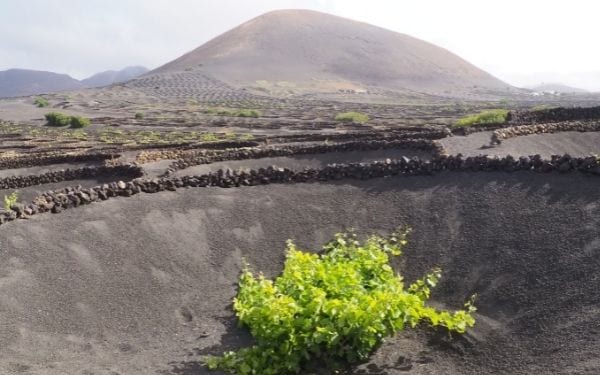
Different wines and wine tourism
Its variety par excellence is the volcanic Malvasia. This variety came to Lanzarote Madeira in the XNUMXth century. It produces fresh wines, with acidity, citrus and notes of the sea. Talk about Lanzarote wines it is talking about quality, not quantity. The yield of the vines is very low: 1.500 kilos of grapes per hectare. Until the arrival of the motor, it was harvested on dromedary. In the last four years the number of wineries has doubled and there are currently about twenty in the DO Half of them are in The Geria.
It is known as wine road. The first winery that started receiving visits is Origival , where you can also see the shacks. From the 1.775th century, it is the oldest winery in the Canary Islands and has been producing wines since XNUMX. Below the winery was El Grifo, one of the six villages buried by the Timanfaya. Its flagships are the dry Malvasia and the Listán negro.
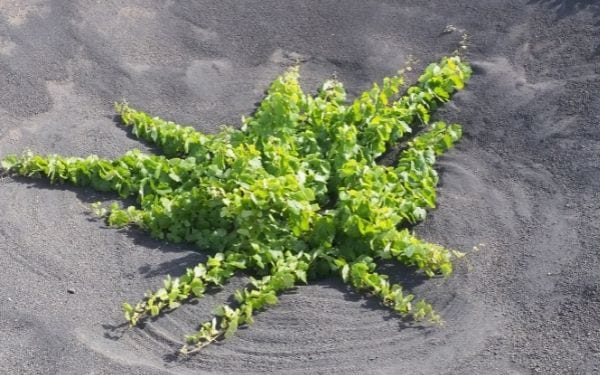
Craft beer in harmony with the island
Not far from here, there is in Reef an area of old abandoned canneries and inside an old fishing nets workshop. Now converted into a brewery, its brewmaster had the idea of making a beer with Malvasía grape. In collaboration with the Vulcano Winery, the result is Maresía, of Nao beers. “It is an Ale, but with the must of Malvasía. The must is made with barley and hops are added that do not compete with Malvasía… It has been in the bottle for nine months ”, explains its owner, Miguel Lasso. Its edition is limited, of 3.000 bottles.
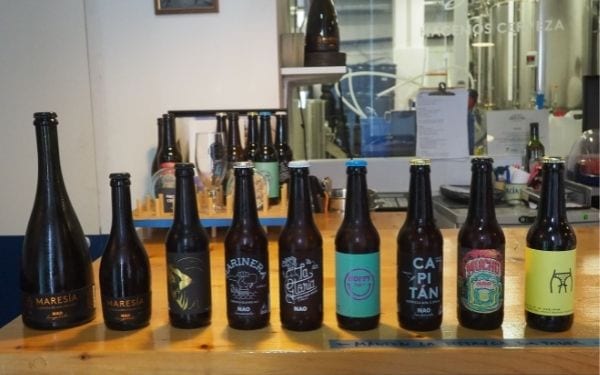
The ones that Nao sells the most are Mucho (IPA) and the Captain (American Pale Ale). "They are beers with a refreshing point, for our environment", he tells us. Nao just released Hoppy lager, with two hops. He announces that they will soon brew a beer with Janubio salt. In Arrecife, a good option to eat is the Castillo de San José Restaurant. It has views over the bay and contemporary Canarian cuisine.
The beauty of the salt flats
The Janubio salt flats, in the southwest of the island, they are a salt garden and well worth a visit. Since 1895 this family business carries out traditional harvesting with artisanal methods. It is considered one of the most unique salt mills in the world. And it is that the lagoon where the salt flats are was created by volcanic eruptions that formed a lava barrier. In addition to its thin sheets of crystals, the salt flowerThey offer seasoned sea salt. We can find it with red mojo, green mojo, Canarian adobo, or with Canarian salmorejo in its range Flavors of Janubio.

The always present, Cesar Manrique
They also have boxes of salt with images designed by the Lanzarote artist, Cesar Manrique, whose work is scattered throughout the island. In its Peasant Monument, the artist recognizes the work of the peasants on the island. Represents the adverse conditions they face. Here are workshops to learn how to make mojo sauce, gofio pella and paint with cochineal watercolor. Lanzarote It was called the "purple island", because it lived until the middle of the XNUMXth century cochineal dye. This one from the tuneras (prickly pears) is used as a coloring in gummies, yogurts, Campari, sausages, chorizo or syrups.
With the appearance of the anilineIn 1910, the cochineal was no longer exported. Lanzarote then he began to live from fishing and after tourism. Manrique (1919-1992) wanted tourists to know how people lived in Lanzarote before the arrival of tourism, and shows it in this Monument of the Peasant, where it also proposes a tour of architecture, crafts and traditional gastronomy. Its restaurant offers a 100% rabbit hutch food (name of the island, which comes from the fact that before there was money, tricks were made between islands, and in Lanzarote rabbit skins were used).

En the Jameos del Agua, Manrique's first center used a volcanic tube through which the lava flowed. He managed to make this unique place of harmony between nature and artistic creation. A place with a turquoise water pool and an original auditorium. His last intervention on the island was the Cactus Garden, for which he took advantage of an emptied volcano. Like a Roman amphitheater, it created a home for cactus flowers from much of the world, especially Mexico. It is home to about 4.500 specimens of 450 species of cacti.
Cheese factory with the character of the island
At the gastronomic level, the island also offers cheese shops where you can taste its goat cheeses. An example is the Flor De Luz cheese factory, in San Bartolomé, created by the Colombian Luz Nélida six years ago. They have 300 majorera goats, from which they extract 40.000 liters of milk a year for cheese. They are made with raw milk and animal rennet, tells us his son, Carlos Castro. They are dry-land goats that feed on dehydrated cereals, millet, alfalfa and potatoes.
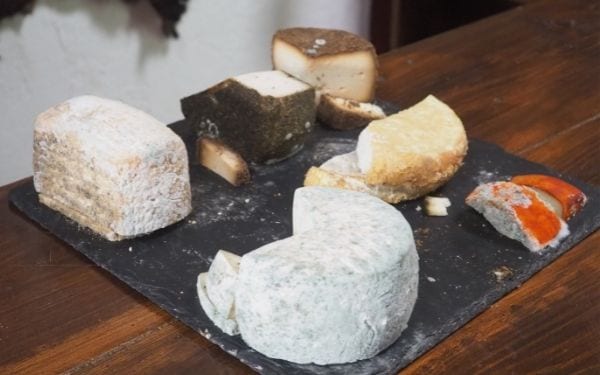
They make fresh and semi-cured cheeses with paprika from La Vera, smoked, with curry, Provençal. Also with black, blue or guava sweet pepper. The semi-cured obtained the Bronze of the World Cheese Awards 2016. Since last year they have been conducting cheese tasting experiences with wine, aperitif or food. So if you are a cheese lover, you have to visit Lanzarote





